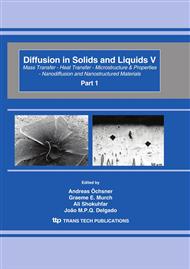p.1167
p.1171
p.1177
p.1183
p.1190
p.1199
p.1205
p.1210
p.1218
Characterization of Thermal Contact Resistance in Metal Micro-Textured Thermal Interface Materials Using Electrical Contact Resistance Measurements
Abstract:
A novel Metal Micro-Textured Thermal Interface Material (MMT-TIM) has been developed to address a number of shortcomings in conventional TIMs. This material consists of a thin metal foil with raised micro-scale features that plastically deform under an applied pressure thereby creating a continuous, thermally conductive, path between the mating surfaces. One of the difficulties in experimentally characterizing MMT-TIMs however, is distinguishing the bulk thermal resistance of the MMT-TIM from the thermal contact resistance that exists where it contacts the test apparatus. Since these materials are highly electrically conductive, this study attempts to employ electrical contact resistance measurements to estimate their thermal contact resistance. Tests using flat silver and gold specimens of known bulk thermal conductivity were used to develop a correlation between electrical and thermal contact resistance. This relationship was then employed to estimate the thermal contact resistance of a prototype silver MMT-TIM and indicates the thermal contact resistance accounts for approximately 10% of the measured thermal contact resistance. A number of issues related to this technique are discussed as well as its future outlook.
Info:
Periodical:
Pages:
1190-1198
Citation:
Online since:
April 2010
Authors:
Price:
Сopyright:
© 2010 Trans Tech Publications Ltd. All Rights Reserved
Share:
Citation:


